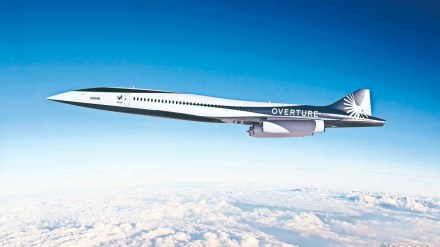Last month, the successful launch of the first supersonic flight of Boom Supersonic XB-1 demonstrator aircraft took place at the Mojave Air & Space Port in California. The American technology company designing supersonic airliners plans to incorporate this technology, called Boomless Cruise, into another airliner, called Overture, and expects to begin engine core testing by the end of 2025.
Overture will be the world’s first independently developed supersonic jet and the first civil supersonic jet made in America. This is after Concorde flights were retired from service in 2003.
Apart from Boom, which has conducted successful trials, there are other companies exploring supersonic space and working on aircraft. Exosonic, Spike Aerospace, Lockheed Martin and NASA are developing technologies on supersonic passenger aircraft.
However, Boom projects a market for up to 1,000 supersonic airliners, serving 500 viable routes, with fares comparable to business class. Boom’s Overture can fly at Mach 1.7 and can go into service in 2029, envisioned as the “fastest and most sustainable supersonic airliner”, according to the company website, transporting up to 88 passengers at 1.7 times the speed of sound.
So what does flying supersonically mean? It can drastically decrease flight time. The Overture can fly at Mach 1.7, and the company claims a trip from New York to Rome on Overture could take just four hours and 40 minutes, instead of eight hours.
“XB-1’s supersonic flight demonstrates that the technology for passenger supersonic flight has arrived,” said Boom founder and CEO Blake Scholl, adding “A small band of talented and dedicated engineers has accomplished what previously took governments billions of dollars. Next, we are scaling up the technology on XB-1 for the Overture supersonic airliner. Our ultimate goal is to bring the benefits of supersonic flight to everyone.” Scholl aims to make the jet everything Concorde was not in terms of sustainability and accessibility.
But sustainability is a big question. Carbon emissions is one major concern for the aviation industry, and with global airlines committed to net-zero aviation by 2050, supersonic transport aircraft seem to pose a threat of emissions. That’s because the faster an aircraft flies, the more it is energy-intensive. Supersonics use powerful, narrow engines to produce the high thrust needed to break the sound barrier.
But the reason why Concorde flights halted was due to excessive cost, high fares, and loud noise. On a regular flight, Concordes consumed 6,771 gallons of fuel, which quickly exceeded the profit made from the flight. In addition to that, only a total of 20 Concordes were built and no airline ordered them except for Air France and British Airways, who had to as they were state-run airlines at the time. Other restrictions included flying over the ocean because a sonic boom could shatter the glass of houses and it generated enough noise for residents to complain.
Concorde was restricted to flying transatlantic routes, taking off and landing in New York, Washington, London, and Paris.
Overall, supersonics burn an astonishing amount of fuel-between four and nine times more fuel per seat kilometre than subsonics (which account for all aircraft currently in commercial operation), according to a recent Massachusetts Institute of Technology (MIT) report submitted to the National Aeronautics and Space Administration (NASA). As a result, this is bound to have a disproportionate climate impact. A recent study by the International Council on Clean Transportation (ICCT), a ClimateWorks Foundation, explores whether sustainable fuels can help reconcile the twin goals of zero-emission aviation and supersonic aircraft.
Supported by the Aspen Institute and MIT’s Laboratory for Aviation and the Environment (LAE), the study models the economics, operations, and emissions of new supersonic aircraft operated on both a conventional “Jet A” fossil fuel and a synthetic “e-kerosene” generated from renewable electricity. The ICCT/ MIT report concludes that using sustainable fuels in supersonics is not a viable solution. ICCT believes that supersonics should meet the same noise, air pollution, and CO2 standards as subsonic aircraft.
